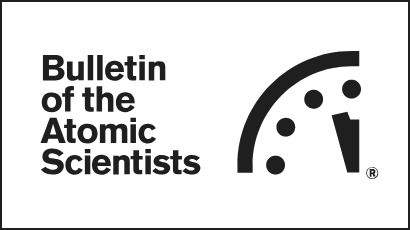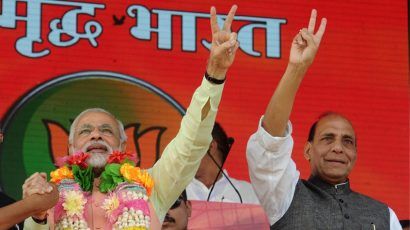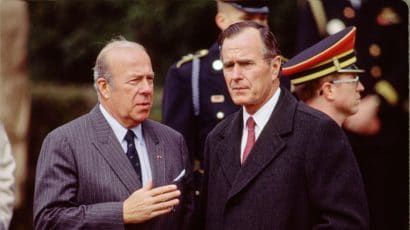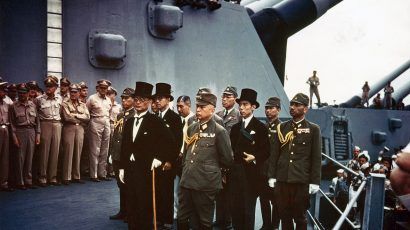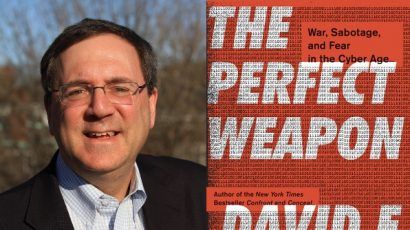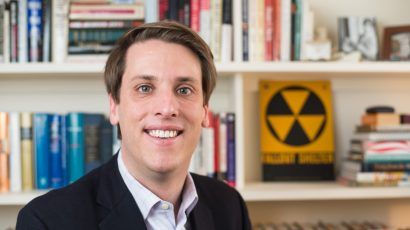Search results for nuclear terrorism
Understanding the reliable replacement warhead
The U.S. weapons laboratories want to build a new, supposedly safer, nuclear warhead. But will it make the country safer?
Is India “creatively reinterpreting” its no-first-use policy?
Since 2003, India has been developing a “counterforce” option to target Pakistan’s nuclear forces rather than its population centers. New capabilities have given way to new temptations.
Stuxnet and the Bomb
With confirmation that the United States was behind the 2010 cyberattack on Iran's nuclear enrichment facility, the world has officially entered a new era of warfare. The New York Times' comprehensive reporting details how the US and Israeli governments developed the malicious Stuxnet software and how they deployed it in the digital wilderness of the Internet specifically to attack the plant at Natanz.
Remembering George Shultz: an interview with a key figure in ending the Cold War
Former Secretary of State George P. Shultz, one of the “four horsemen of the nuclear apocalypse” who advocated for serious moves toward less reliance on and eventual elimination of nuclear weapons, died Saturday at the age of 100. To commemorate his decades of public service in and out of the government, we are republishing this 2013 interview, in which he details his arms control efforts and his later work in the climate change arena.
Thirty years after TMI: Five continuing vulnerabilities
To its credit, in the 30 years since the accident at Three Mile Island, the Nuclear Regulatory Commission (NRC) has taken many steps to improve the safety and security of U.S. nuclear reactors. But despite these efforts and the fact that a Three Mile Island-scale accident hasn't occurred in the United States since 1979, safety and security vulnerabilities remain at the country's nuclear plants. And what is more relevant than the absence of large-scale accidents is the alarming frequency of serious near misses.
Weapons of mass destruction: the Russian challenge
To meet its international obligations to keep weapons of mass destruction out of the hands of terrorists, Russia should negotiate an initiative within the Eurasian Economic Union.
Internet-trading platforms: Making it easier to get around sanctions?
You can get anything you want on Internet-trading platforms like Alibaba. Which isn't good for nuclear proliferation control.
Deciphering NNSA’s Complex Transformation
To draw attention to Complex Transformation, its "vision for a smaller, safer, more secure, and less expensive nuclear weapons complex," in January, the National Nuclear Security Administration (NNSA) announced that it had begun removing Category I and II special nuclear materials (SNM) from Lawrence Livermore National Laboratory to the Savannah River Site--a task that the NNSA anticipates completing by the end of 2012 and would
What Europeans believe about Hiroshima and Nagasaki—and why it matters
There’s a correlation between the belief that the bombings were necessary to end the war and opposition to nuclear disarmament today.
Lessons not learned: Insider threats in pathogen research
In the classic film Dr. Strangelove, Brig. Gen. Jack D. Ripper was the ultimate insider threat. As the nuclear-armed B-52s that Ripper unilaterally dispatched proceeded toward their Soviet targets, the American president confronted Air Force Gen. Buck Turgidson in exasperation: "When you instituted the human reliability tests, you assured me there was no possibility of such a thing ever occurring." To which Turgidson replied, "Well, I don't think it's quite fair to condemn a whole program because of a single slip-up, sir."
Disarmament lessons from the Chemical Weapons Convention
The recent joint declaration by U.S. President Barack Obama and Russian President Dmitry Medvedev to negotiate a new treaty reducing their countries' nuclear stockpiles as a first step toward "a nuclear-weapon-free world" has spurred hopes for renewed progress in global disarmament after a decade of gridlock. An excellent example of how nations can work together effectively within a multilateral framework to eliminate weapons of mass destruction is the Chemical Weapons Convention (CWC).
U.S. loose nukes
The idea that lax accounting, a violation of security procedures, and/or plain negligence could cause a warhead to disappear from a nuclear superpower's arsenal without notice was one of the scariest scenarios in the immediate post-Cold War period. More than a decade later, it turns out these concerns weren't unfounded. Such a scenario more or less occurred at the end of August. The only surprise was where it happened--not in Russia or one of the former Soviet republics as expected, but in the United States.
Biotech promises miracles. But the risks call for more oversight
Despite the dramatic pace of discoveries in the life sciences, the regulatory systems established for other dual-use risk domains, such as chemical and nuclear research, remain far more mature than those for oversight of the bioeconomy. Developing a well-balanced oversight system will not be easy. Nonetheless, the expanding gaps in national and international governance of dual-use biotechnology dictate that this subject be a core component of national security policies.
David Sanger on the perfect weapon
The longtime New York Times national security reporter talks about his new history of cyberwar, why we need a public debate, and how cyberattacks make nuclear war more likely.
Legally incapacitated, politically outmaneuvered
When survivors of the 2002 theater siege in Moscow -- in which Russian police used a gas widely believed to be a fentanyl derivative to flush out terrorists -- brought claims before the European Court of Human Rights, the ruling came down with mixed results.
Redefining deterrence: Is RRW detrimental to U.S. security calculus?
Editor's note: The opinions expressed below are solely those of the author and not his employer.The Reliable Replacement Warhead (RRW) Program proposes to redesign the nuclear explosive package of U.S. nuclear warheads using advanced computer simulations and the experience gleaned from previous weapons tests. The advertised aim of RRW is to enhance warhead safety and security while improving confidence in the stockpile's long-term reliability--allegedly, without any new nuclear explosive tests.1
In praise and fear of France’s energy policy
I'm writing this column from the South of France, where for the past five days I've been a member of a Harvard delegation that toured several nuclear facilities operated by AREVA, the French state-owned nuclear company. AREVA is a product of the French government's decision in the 1970s to chart a coherent and consistent national energy policy centered on nuclear power.
Not much happened after India’s accidental cruise missile launch into Pakistan—this time.
Though no harm came from India’s accidental cruise missile launch into Pakistan on March 9, 2022, the incident raises questions about the risk of accidental escalation between nuclear-armed adversaries.
Bunkers for the 0.003 percent
An interview with Garrett M. Graff, author of the new book Raven Rock, on how the US government plans to maintain itself in the event of a nuclear attack.
